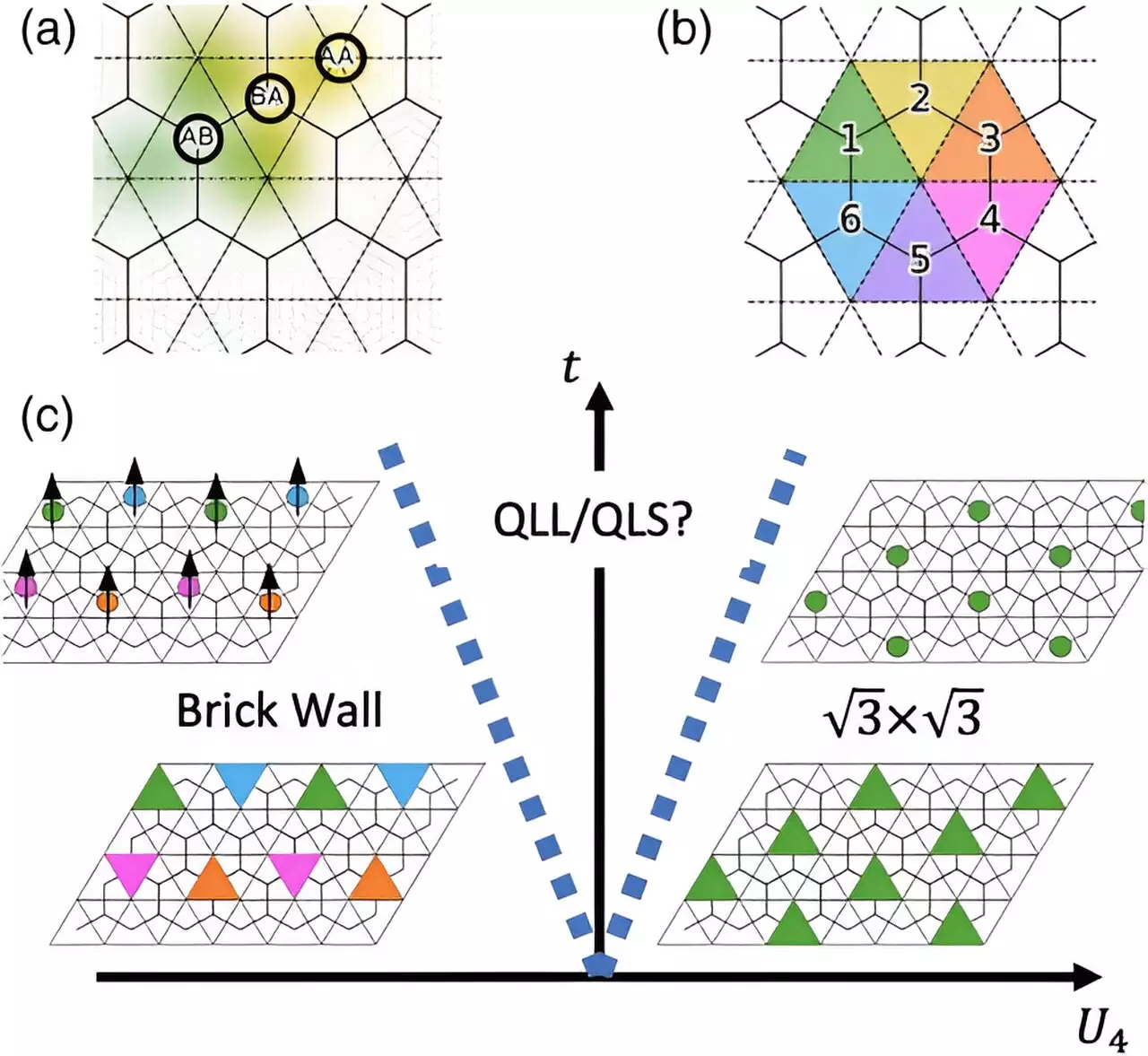In the world of condensed matter physics, one elusive goal has captured the imaginations of many researchers: observing fractionalization, a phenomenon where a collective state of electrons carries a charge that is a fraction of the electron charge, all without the need for a magnetic field. While it may sound like splitting an electron into pieces, the reality is far more intriguing. Eun-Ah Kim, a professor of physics in the College of Arts and Sciences at Cornell University, explains that fractionalization occurs when a group of electrons behaves as if it carries a deficit of charge that is only a fraction of an electron charge. These fractionalized states have the potential to revolutionize not only our understanding of physics but also pave the way for advancements in quantum computing and various technological applications.
In their groundbreaking research published in “Physical Review Letters,” Kim and her team offer a new perspective on achieving fractionalization. Unlike previous approaches that relied on the use of magnetic fields, their theory suggests a way to attain fractionalized states without the need for such specialized conditions. Their study, titled “Fractionalization in Fractional Correlated Insulating States at n ± 1/3 Filled Twisted Bilayer Graphene,” explores the concept of fractional correlated insulator phases in twisted bilayer graphene (TBG) lattice systems.
One crucial aspect of the electron behavior in twisted bilayer graphene is how the electron wave function spreads across multiple moiré lattice sites, instead of being localized to a single site. Furthermore, this wave function exhibits an anisotropic shape resembling a three-leaf clover. By harnessing the geometric properties of the TBG lattice, the researchers propose the existence of fractional correlated insulator phases, which possess distinct characteristics:
– Excitations or particles exhibit fractional electric charges, a defining feature of fractionalization.
– Some of these fractional excitations, known as “fractonic” particles, can only move in specific directions.
– The researchers have identified an emergent symmetry that unifies the behavior of fractional excitations within these phases.
Kim believes that their groundbreaking discovery provides an opportunity for the exploration of novel theoretical concepts, such as emergent symmetries and fractonic dynamics. The yet-to-be-confirmed predictions have opened up a new path for researchers to delve further into the mysteries of fractionalization. Collaborations with experimental colleagues aim to validate these findings and unlock further potential in the field.
While the research team acknowledges that their work has merely scratched the surface, they are excited about the possibilities that lie ahead. The field of condensed matter physics is primed for a profound shift as scientists unlock the potential of fractionalization. By observing fractionalized states without the need for strong magnetic fields, researchers can explore new avenues of quantum computing and quantum information processing. The far-reaching implications of their findings extend beyond the realm of theoretical physics, potentially transforming various technological applications.
With every breakthrough in the realm of condensed matter physics, we inch closer to a deeper understanding of the fundamental building blocks of our universe. Fractionalization, once considered a distant dream, is now within reach. The research led by Eun-Ah Kim and her team at Cornell University has opened up new possibilities for observing fractionalization in condensed matter systems. By harnessing the unique properties of twisted bilayer graphene, researchers can now explore emergent symmetries and fractonic dynamics, paving the way for future advancements in quantum computing and beyond. As scientists continue to collaborate and push the boundaries of what is possible, the mysteries of fractionalization will gradually unravel, ushering in a new era of scientific discovery.


Leave a Reply